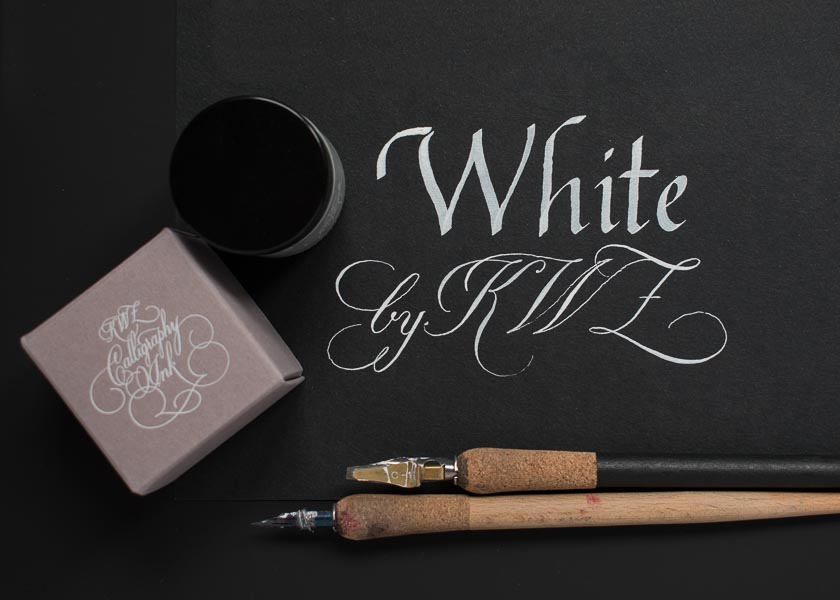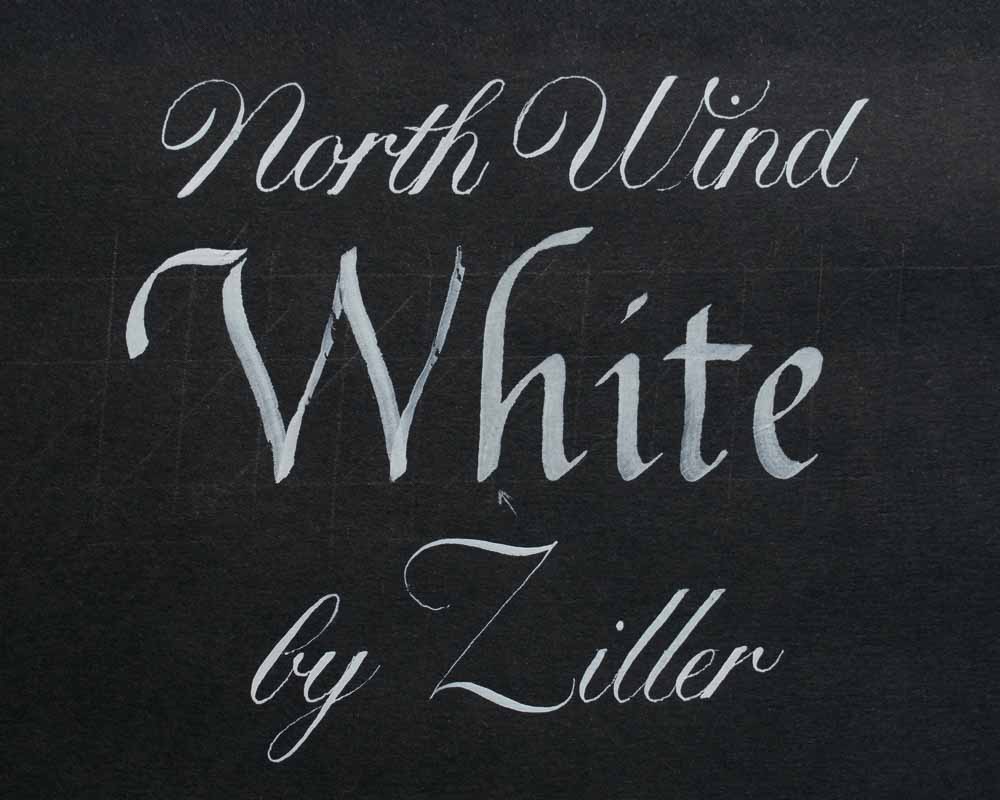I have demanding requirements for white ink: it should cover well, flow nicely from the pen and, ideally, the pen should wash well. And be waterproof after drying. You can probably guess that all this does not go together very well. And so I try more and more types, because what if I happen to come across the ideal?
So I recently added a white ink from KWZ to my basket. After trying it at home, I concluded that it is a classic acrylic ink, of which I have two more types in stock. And yet there are differences between them, so I decided to test them side by side. And to that I added ink from Dr. Ph.D. Martin, which is not acrylic, which is why I actually use it most often.
So we have four white inks in the test:
- KWZ Calligraphy Ink: 5801 – White
- Ziller: North Wind White
- Molotow: 160 Signal White
- Dr. Ph.D. Martin's Bleed Proof White
What makes acrylic inks different from others?
The first three inks are acrylic. Acrylic inks have one great advantage: they are waterproof after drying. On the other hand, they are waterproof even if they dry on the pen, so you have to be very careful when writing. As soon as you want to take a break from writing (even if only for a minute), the pen must be washed without delay. Even so, deposits will form on the pen while writing, but fortunately, you can dissolve the dry ink in some organic solvent. I plan to try acetone or gasoline myself, but there are also special pen cleaners. Economically, however, it will certainly be more advantageous to use some of the mentioned organic solvents.
The last ink - Dr. Ph.D. Martin's Bleed Proof White – looks more like white tempera. It is not waterproof, so you can easily wash it off with water. She's a long-time staple in my arsenal and a big favorite, we'll talk more about her at the end of the article.
I tested the inks on black paper using a flat and pointed pen. So let's discuss them one by one.
KWZ Calligraphy Ink: 5801 – White

The KWZ white ink was the most fluid of all tested. Therefore, there was no need to edit it before writing. Thanks to its consistency, it spreads beautifully on a wide pen, which is why it doesn't skip when writing. On the contrary, the color coverage is rather smaller, which is especially evident on letters written with a pointed pen. In the picture you can see how the paper shows through under the strokes.

Overall, I felt comfortable writing with this ink, and I can recommend it especially for writing with a broad pen. Update after a year: The ink has thickened, it needs to be diluted with water and mixed well. But it is still possible to use it.
Ziller: North Wind White

I've had this mascara for a few years and it's probably thickened a bit over that time. The letter W is written with an unmodified ink, and here you can see how she skipped while writing. So, for the rest of the sign, I diluted them with water, so the problem with skipping disappeared. Even diluted in this way, the ink from Ziller is a little whiter than the KWZ ink (I judge from the inscription with a lady's feather). Update after a year: The ink has completely dried, I had to throw it away.

Molotow: 160 Signal White

I have also had this ink for a long time, but it was sealed, so I don't expect any evaporation or thickening of the ink. The first three letters of the word White are written in ink without modification, after that I also had to dilute it. However, in this diluted state, it is the least opaque and in some places it even dripped from the pen more than it should have. From this point of view, the lower arches written with a lady's pen are the most critical.

For me, this ink is the weakest of the four, but if you don't have another one, it's definitely not a problem to use it.
Dr. Ph.D. Martin's Bleed Proof White

This white ink from Dr. Ph.D. Martin needs to be diluted before writing. Sometimes it can take a while to get the hang of its consistency, which happened to me when writing the word "White". I stubbornly tried to write the first four letters with an ink that was too thick. The feather, which I did not manage to clean perfectly from deposits of previous acrylic inks, could also have contributed to the poor color transfer. With the last letter, I indicated that dilution would not be out of the question. And you can see that it is the last diluted e that is the brightest and also much fuller - the ink had no problem flowing to the edges of the feather. With this consistency, I also wrote the rest of the inscription with a lady's pen. In this case, the letters are the brightest of the four inks tested, the broad strokes of the lady's feather are also pleasantly elevated after drying, which I perceive as an interesting bonus.

I like this ink not only for its high whiteness and coverage, but also for the quality of the lines it allows. With this ink you can achieve the thinnest hairlines. In addition, unlike acrylic inks, it is easily washed off the pen, which you will appreciate not only when you are done, but also while writing.
In conclusion
At first glance, white inks are similar products, especially the acrylic ones. However, there are also differences between them. I have my favorites among them, but I will definitely try others. While writing this article, I received a tip about two more white inks, but this time I will not buy them for my collection and will wait until I can try them on someone. And what about you? Are you also buying more and more inks and looking for the right one? Or have you already found it? Have you tried anything from today's review? Write in the comments!
